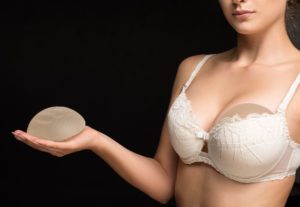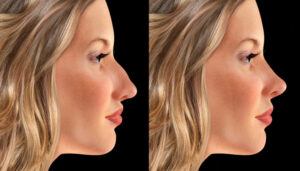
The changing body
Juvenile and adult female bodies change over time. Breasts change too. Hormone levels, weight fluctuations, pregnancy, nursing, and skin relaxation with gravitational settling influence breast size, shape, and appearance. Biologic interaction between inanimate implants and the surrounding living tissues also changes. Implants may drop over time as supporting skin and soft tissues stretch and relax. Implants beneath the pectoralis major muscle are subject to pressure from muscular contraction, which may reposition implants over time. Mild changes in implant position and breast appearance over time may contribute to a more natural and aesthetic result. How well your breasts support your femininity and lifestyle is a subjective matter. Only when your implants become sufficiently detrimental to justify revision, replacement, or removal will your implants’ life span come to an end.
Changing preferences
Women often replace breast implants because their lifestyle has changed. Personalities, priorities, daily activities, fashions, and personal relationships change over the years. Large implants that filled swimsuit tops so well on spring breaks may not be as comfortable during yoga sessions wearing Lululemon twenty years later. Weight gain over years may drive a desire for improved proportion with larger breasts. Multiple situational transitions influence the decision to change size, shape, or type of breast implants.
Breast implant failure (rupture)
Early implant rupture (within the first 20 years) may be related to localized weakness of the implant envelope from a fixed fold or wrinkle, to individual implant variability in the manufacturing process, to impact(s) from trauma (including mammography), to damage by a surgical instrument, to prolonged excessive pressure, or to a combination of these elements. Saline implant failure is obvious by deflation and shrinking of the involved breast. Silicone implant failure is usually “silent,” and initially undetected. Only when symptoms occur such as discomfort, shape change, or change in consistency of the breast might implant rupture be suspected. Confirmation of silicone implant status requires an imaging study such as high- resolution ultrasound or magnetic resonance imaging (MRI). The FDA and implant manufacturers recommend removal or replacement of failed implants. Inform your mammogram technician that you have implants.
Breast implant displacement
Implant displacement refers to the shifting of breast implants away from their initial position at the time of surgery. Changes in breast shape, breast symmetry, and physical discomfort may develop. Implants sometimes move over time laterally away from the midline toward the sides of the chest. They may elevate to become positioned higher on the chest, or drop and settle lower on the chest. Known causes of implant displacement include:
- Variations in healing
- Capsular contracture
- Muscle spasm
- Implants too large for the underlying chest structure
- Skin and breast tissue stretching and thinning with loss of support
- Implant pockets enlarge with increased mobility of the devices
- Skin between the breasts detaches
- Weight gain and loss
- Surgical error
The relationship of the breast volume (breast gland plus breast implant) to the nipple-areola unit is aesthetically important. Implant displacement may change this relationship, creating an artificial and distorted appearing breast. Repositioning displaced breast implants requires a secondary surgery, ending the lifespan of your existing devices.
Breast implant rippling
Breast implant rippling is not a medical complication but may be a sufficiently troublesome aesthetic problem that revision breast augmentation is desired. Ripples, wrinkles, or implant generated skin irregularities visible in strapless dresses, low cut tops, swimwear, or lingerie disclose to others and remind the bearer of her artificial devices. Wrinkles or ripples may be visible in any location on the breasts, and are most common in the cleavage area, at the sides, or under the breasts. Ripples are sometimes only felt, but not seen. If so, implant replacement is not indicated.
Visible ripples are more likely in the following situations:
- Less natural tissue covering the implant (thinner skin, leaner women, less natural breast tissue)
- Underfilled saline implants
- Excessively large implants
- Low breast implant cohesivity (saline implants and older devices)
- Capsular contracture compressing implant(s)
- Surgical technique
- Rotation of shaped breast implants
Minor rippling related to poor soft tissue coverage can sometimes be improved by fat grafting or poly-L-lactic acid (Scuptra®) injection. More significant rippling, rippling from contracture, or rippling associated with other problems such as malposition or displacement may be a reason for implant removal or replacement, marking the end of life for existing breast implants.
Capsular contracture
Capsular contracture is the most common indication for surgical revision of breast augmentation. Contracture is a chronic inflammatory process characterized by thickening and tightening of the normally thin, soft, and pliable fibrous envelope surrounding every implanted device. When this envelope becomes thicker and tightens, it feels firm. Contracture compresses breast implants, and may change their shape, position, and appearance. Contracture may be uncomfortable or painful. The dense scar tissue of contracture can distort breasts in a remarkable way so they are no longer symmetric, feminine, or beautiful. New knowledge has contributed to our understanding of why contracture happens, and plastic surgeons now apply preventive measures during breast enlargement surgery. Although medical treatment for contracture may occasionally resolve it, surgical removal of the contracted capsule and breast implant removal or replacement is the most reliable cure. This may happen years to decades after breast augmentation.
The longest lasting implants begin with the best plastic surgeon
Breast augmentation offers tremendous benefits for most women. An understanding of breast implants before surgery is worthwhile. The future is unknown, and how long a particular breast implant will last can’t be predicted. Still, modern implants and preventive measures against complications are expected to prolong the life of implants. Dr. Laverson approaches every breast augmentation surgery individually and helps women select implants and techniques that align best with their needs. Whether you’re getting breast implants for the first time or you’re considering breast implant revision, Dr. Laverson is a highly recommended Board-Certified San Diego Plastic Surgeon specializing in breast augmentation, breast implant revision, and breast implant removal.
Call to schedule free consultation today!














